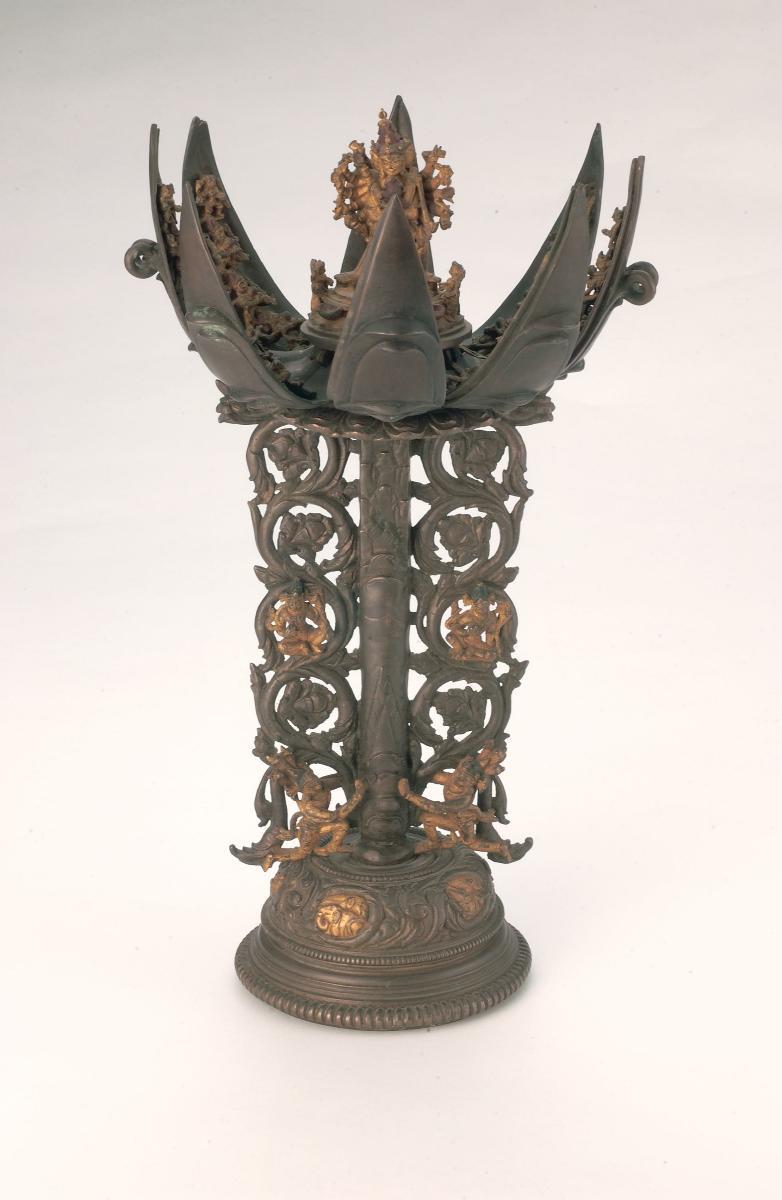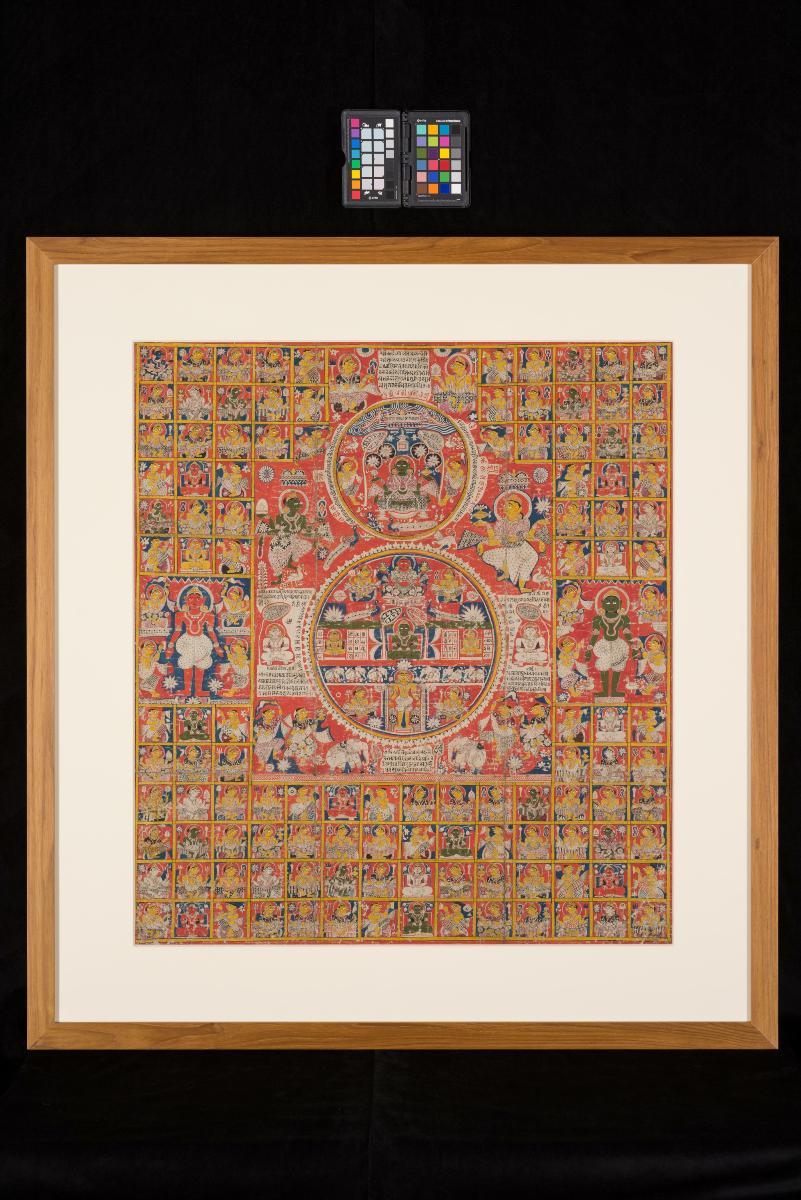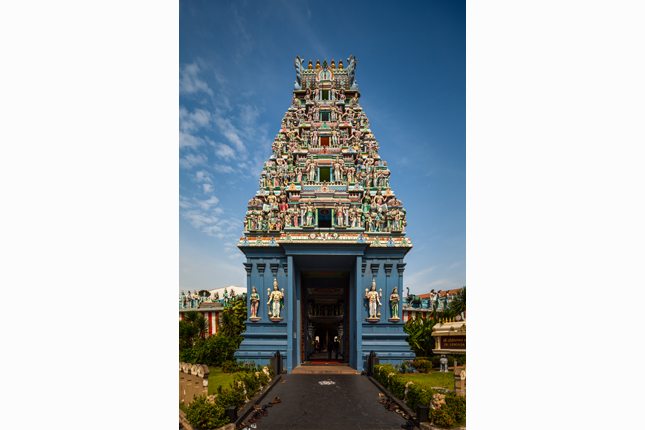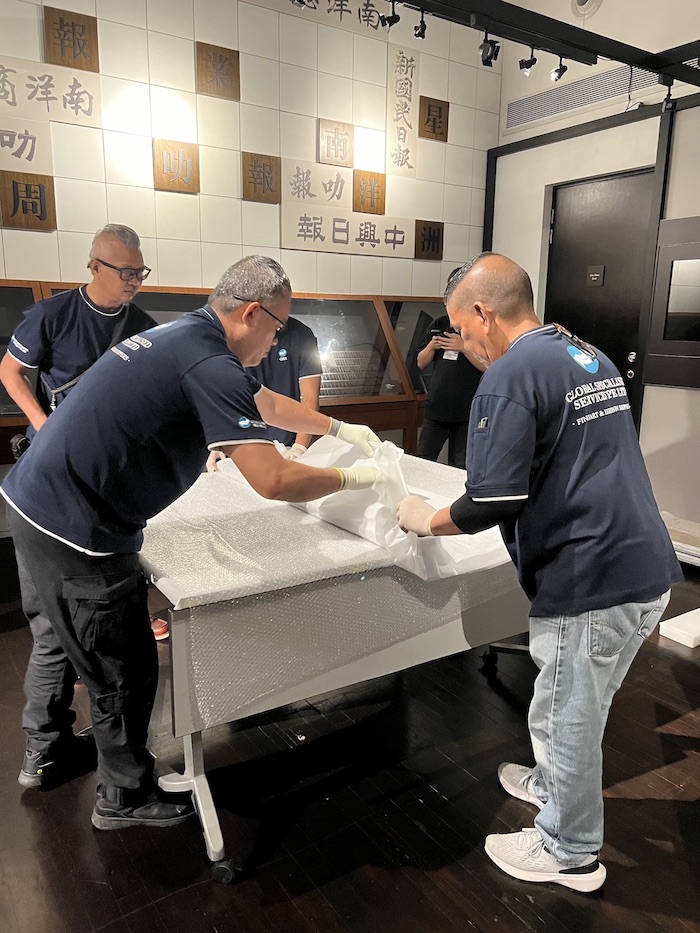This mandala is in the form of a lotus and is supported by an elaborate stalk composed of floral and leaf motifs with the serpent kings, Nanda and Upananda seated over the circular base with braided rims. The inside of the petals depict goddesses and deities dancing and brandishing ritual implements. All the divine beings are depicted to look in towards the central deity, Chakrasamvara and Vajravarhi. In Indo-Tibetan Vajrayana Buddhist traditions, Chakrasamvara is often depicted in four faces with a high crown and holding a ‘vajra’ (ritual tool) in his principal hands and assorted attributes in the secondary ones. He embraces his consort, Vajravarahi in the yab-yum position. Here, Chakrasamvara and his consort are not to be thought of as two different entities but their divine embrace is a metaphor for the union of great bliss and emptiness, which are thought to be one and the same essence in Vajrayana Buddhism.


















